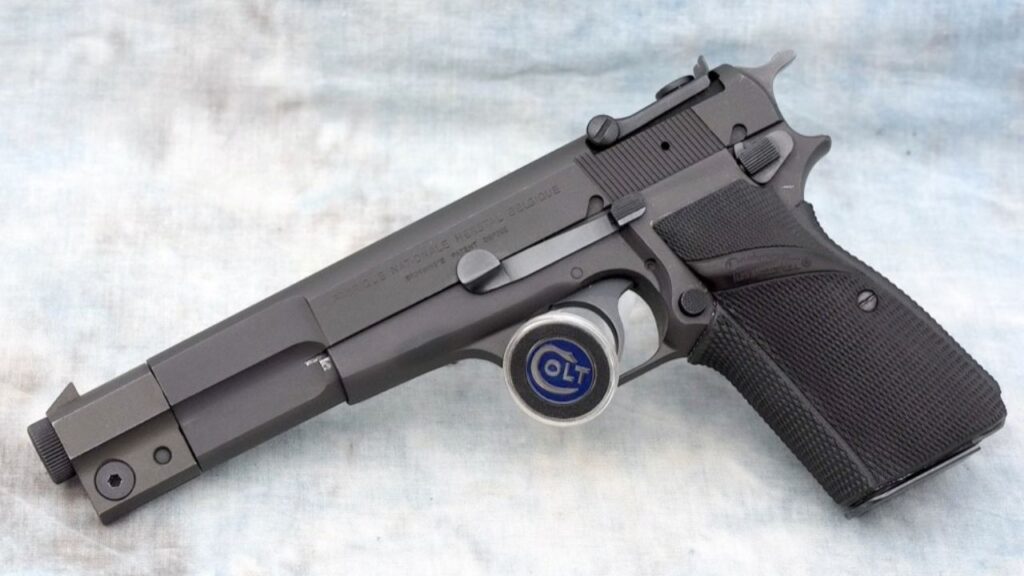When it comes to the firearms that shaped modern battlefields, few made as big a difference as semi-auto pistols. They were compact, reliable, and fast enough to change how soldiers fought up close. From trench warfare to jungle campaigns to Cold War standoffs, certain pistols defined entire eras. Some became military standards across multiple nations, while others set design trends still in play today. If you want to understand how handguns left their mark on the 20th century, these are the models you need to know.
Colt M1911

When you think about sidearms that truly changed warfare, the M1911 tops the list. Adopted by the U.S. military in 1911, this .45 ACP pistol served in two World Wars, Korea, Vietnam, and beyond. Its stopping power gave soldiers confidence in close quarters where revolvers had fallen short.
The design’s reliability was just as important. It ran well in mud, sand, and tough conditions. Many militaries eventually followed with their own semi-auto designs after seeing what Browning’s creation brought to the fight.
Luger P08

The Luger P08 became iconic during World War I and World War II, carried by German forces. Chambered in 9mm, it introduced many shooters to the cartridge that would become one of the most widespread in the world. Its unique toggle-lock design was mechanically complex but admired for precision.
On the battlefield, the Luger wasn’t perfect—it was sensitive to dirt and rough handling. Still, it influenced generations of pistol design and set the stage for the German military’s later shift to more practical sidearms.
Walther P38

The Walther P38 took over where the Luger left off. Adopted by Germany in 1938, it became one of the first military pistols with a double-action/single-action trigger. That allowed soldiers to carry safely with a round chambered while still being ready to fire quickly.
Compared to the Luger, it was cheaper to produce and more reliable under combat stress. Many post-war handguns borrowed from its design, making the P38 one of the most influential pistols of the mid-20th century.
Tokarev TT-33

The Soviet TT-33 was the Red Army’s answer to modern sidearms during World War II. Chambered in the 7.62×25mm Tokarev, it offered high velocity and excellent penetration compared to Western pistol rounds. It became a staple across the Soviet Union and later in satellite states.
While not as refined as some Western pistols, it was tough and easy to mass-produce—two qualities the Soviets valued highly. Its influence spread worldwide, with copies and variants appearing in Asia, Eastern Europe, and the Middle East.
Browning Hi-Power

The Browning Hi-Power hit the scene in 1935 and immediately set new standards. It carried 13 rounds of 9mm in a double-stack magazine at a time when most pistols held half that. For soldiers, that meant more firepower before needing to reload, a clear advantage in combat.
It became a sidearm for over 50 countries and fought in nearly every major conflict of the century. Its balance of capacity, accuracy, and reliability made it one of the most widely adopted handguns ever made.
Beretta M1951

Italy’s Beretta M1951 doesn’t get the same recognition as the Hi-Power or M1911, but it made waves in the post-war era. Chambered in 9mm, it became the standard sidearm for Italy and found its way into use across the Middle East and North Africa.
Its slim, single-stack design made it easy to carry, and it built a reputation for durability in harsh desert climates. The M1951 paved the way for Beretta’s later designs, including the legendary M92 that replaced it in many militaries.
SIG P210

Switzerland’s SIG P210 may not have been produced in massive numbers, but it set accuracy standards that militaries noticed. Adopted by the Swiss Army in 1949, it fired the 9mm round with exceptional precision and reliability.
The P210 was built to extremely high standards, showing what was possible when quality took priority over speed of production. While expensive, its influence was felt in European pistol design and in how military contracts viewed accuracy as part of combat effectiveness.
CZ 75

Czechoslovakia introduced the CZ 75 in the 1970s, but its impact still ties into 20th-century conflicts. With a double-stack 9mm magazine and a smooth double-action/single-action system, it rivaled the Browning Hi-Power in capacity and handling.
Though initially difficult to import to the West, the CZ 75’s design was copied widely during the Cold War. Its grip and controls influenced countless pistols that followed, making it one of the most imitated handguns of the late century.
Beretta M92

The Beretta M92, adopted by the U.S. military as the M9 in the 1980s, capped off the century with one of the most controversial yet significant transitions. Moving from the .45 ACP M1911 to a 9mm pistol marked a huge change in doctrine.
The M92 offered high capacity, smooth recoil, and solid reliability. It went on to see use in every major U.S. conflict from the Gulf War through Afghanistan and Iraq. Its adoption made the 9mm NATO standard nearly universal.
Glock 17

By the late 1980s, the Glock 17 showed up and completely shifted the conversation. Its polymer frame was lighter, tougher, and cheaper to produce than traditional steel-framed pistols. It also carried 17 rounds of 9mm, giving troops plenty of firepower.
While some resisted the change, the Glock quickly proved itself in both military and police service worldwide. By the end of the 20th century, it was clear that this pistol had reset expectations for durability and capacity in a duty handgun.
*This article was developed with AI-powered tools and has been carefully reviewed by our editors.






